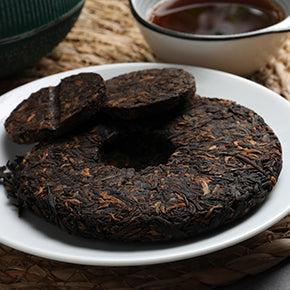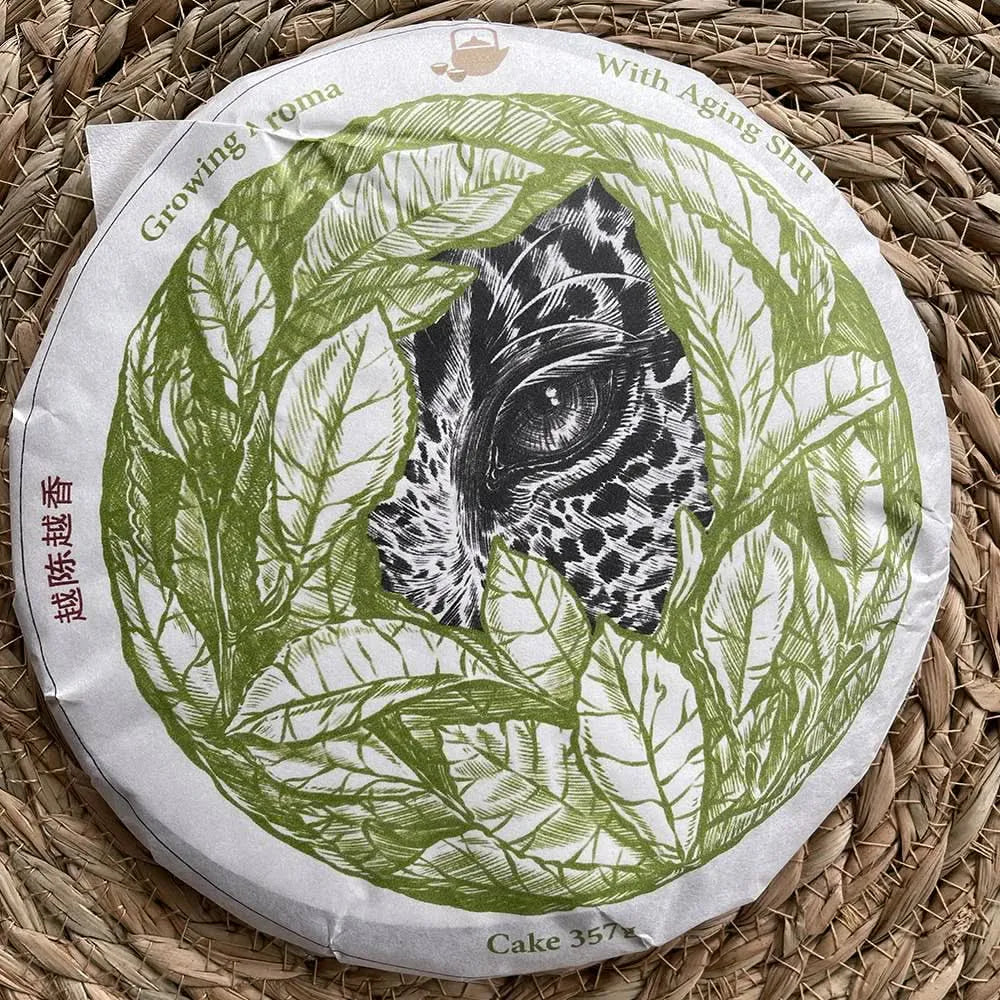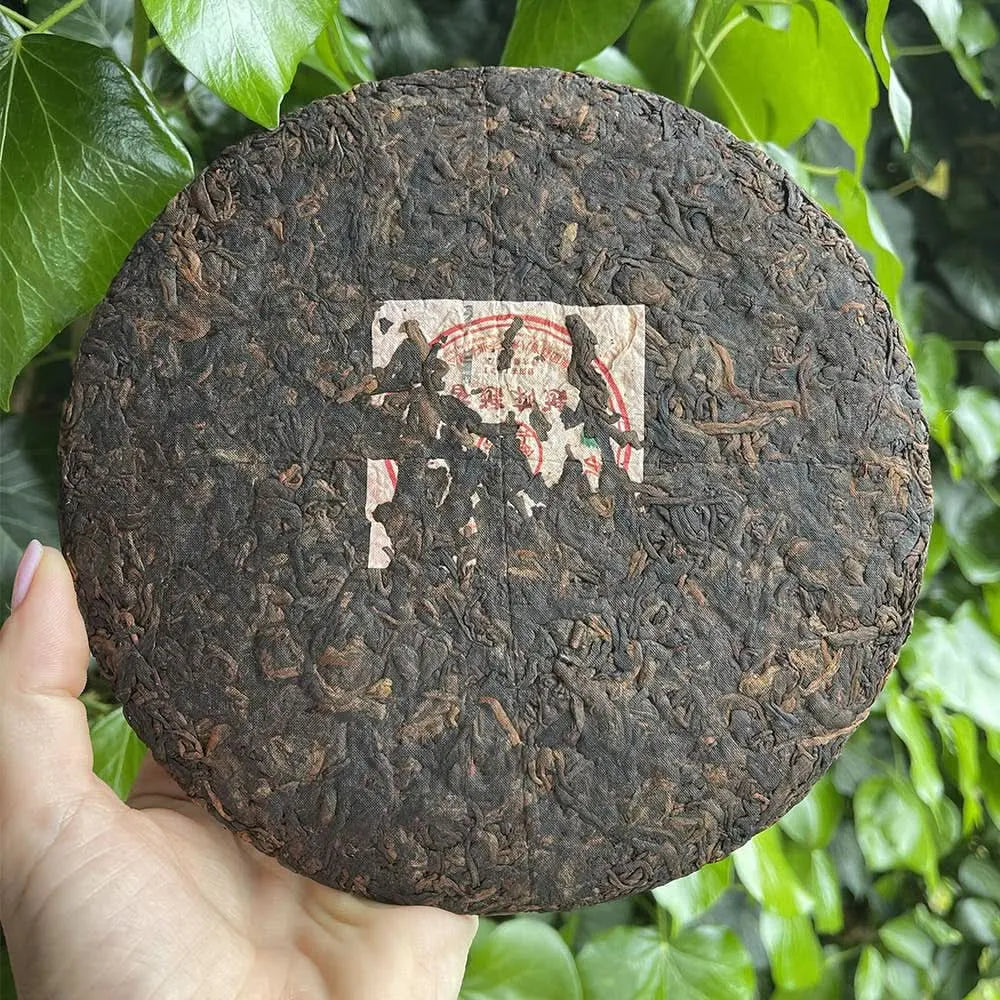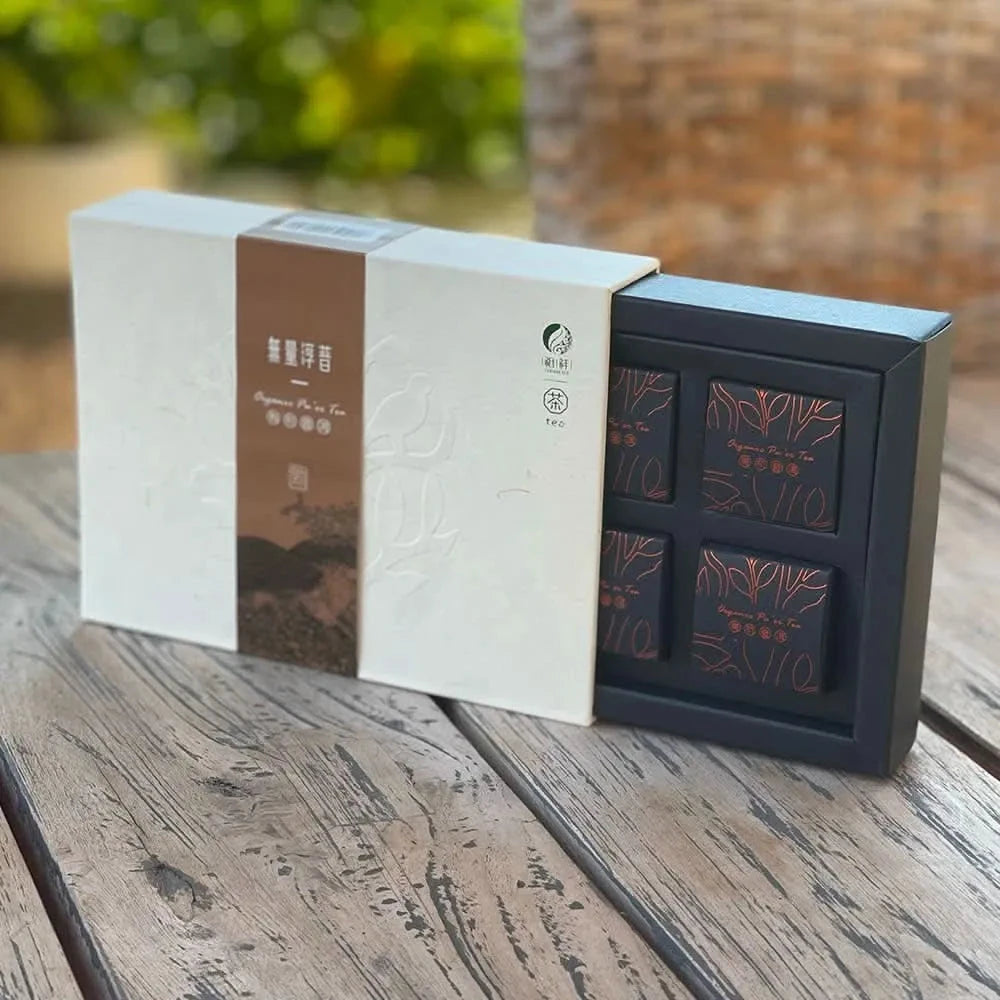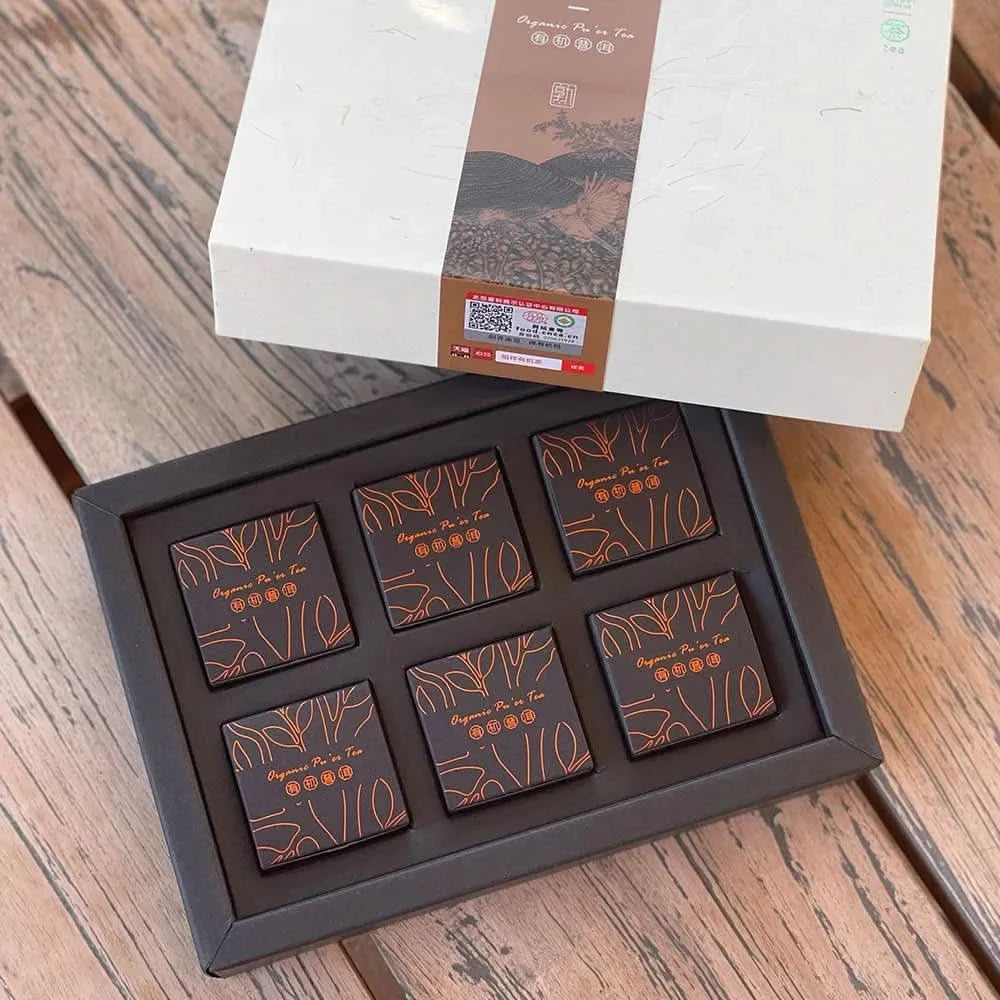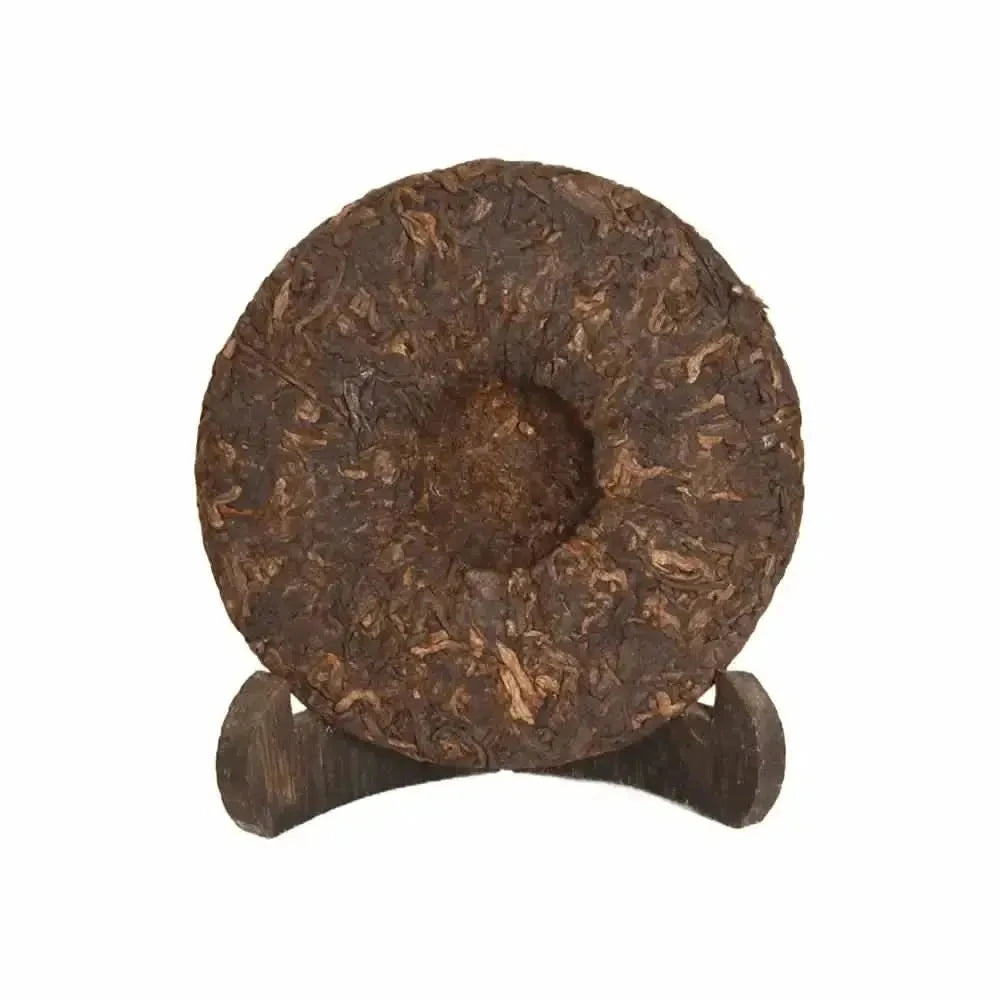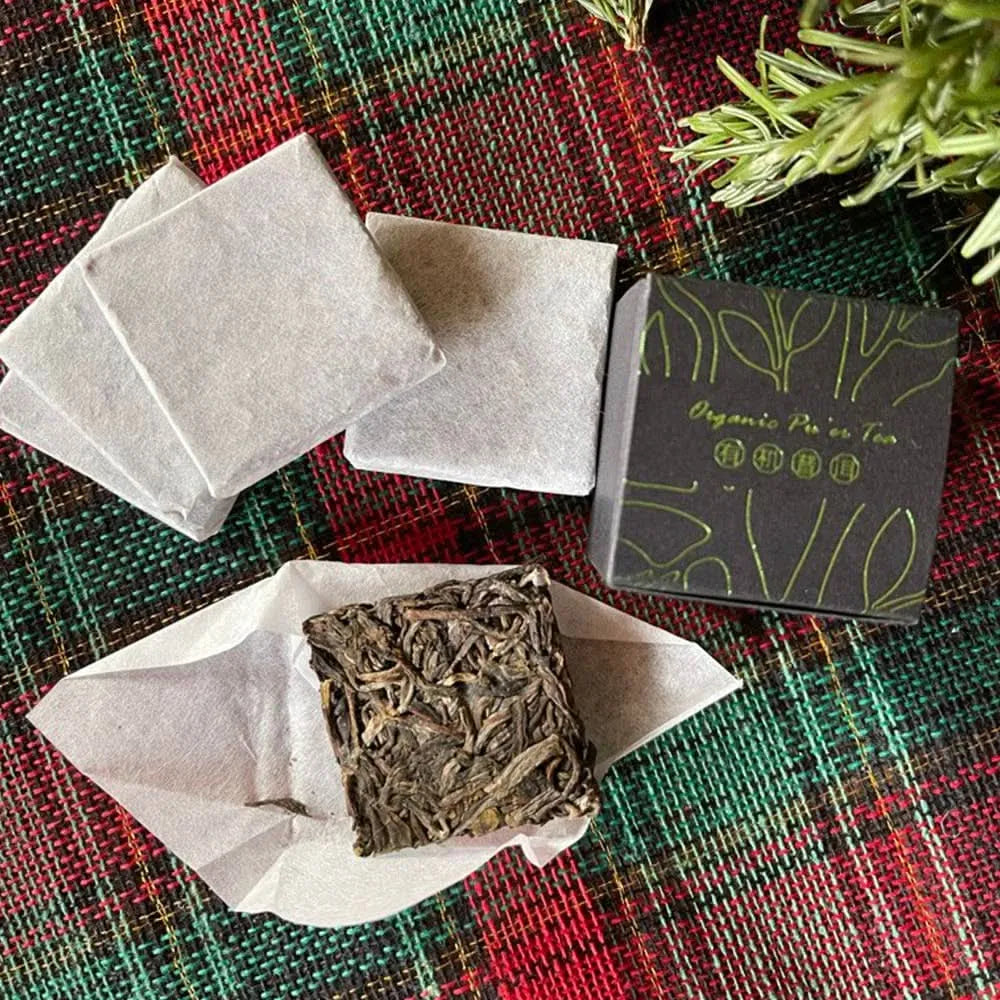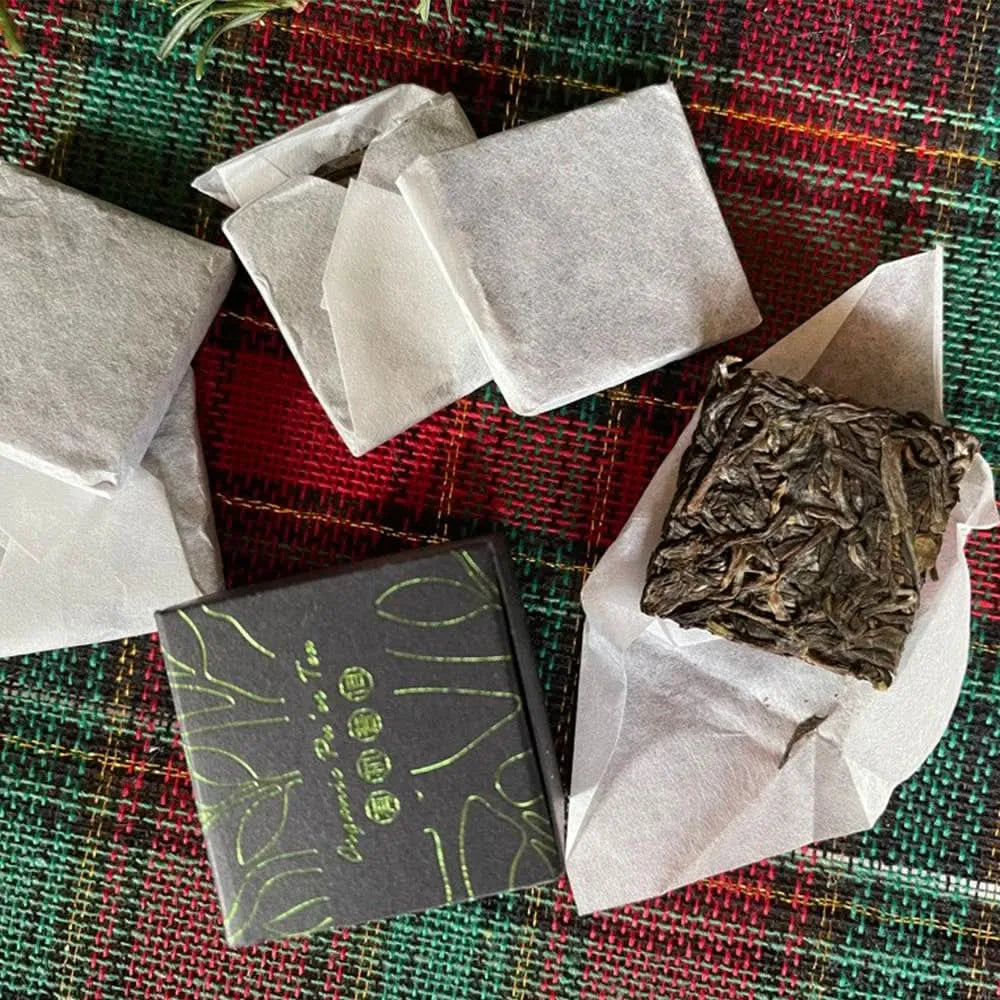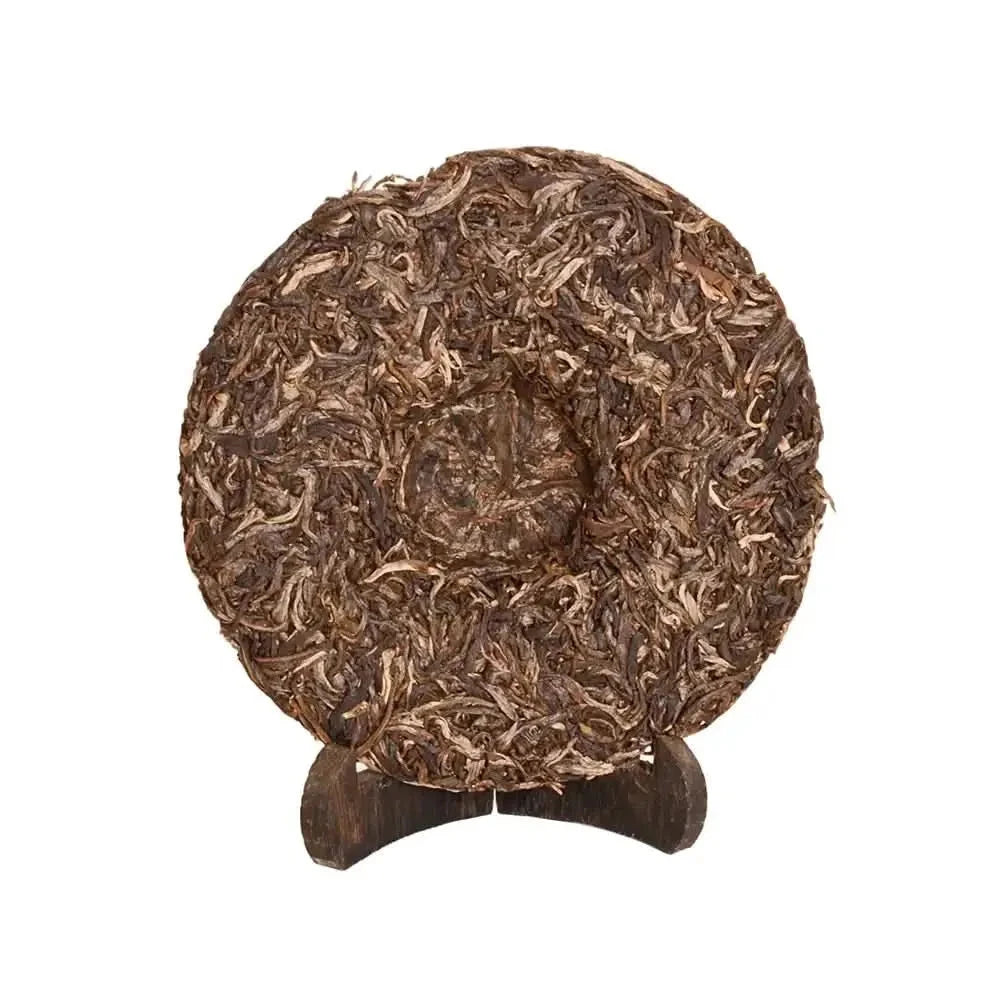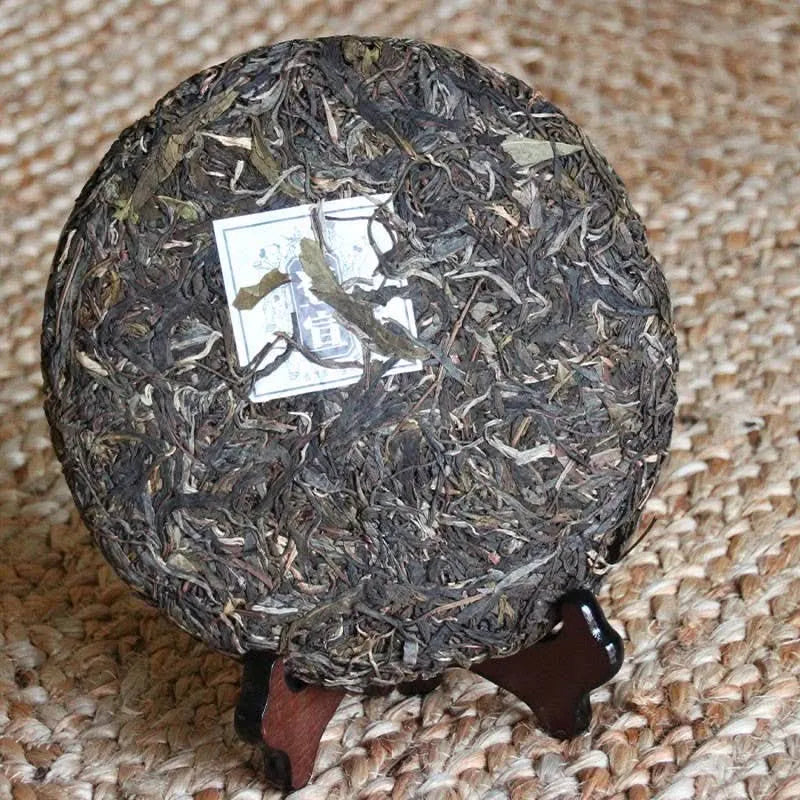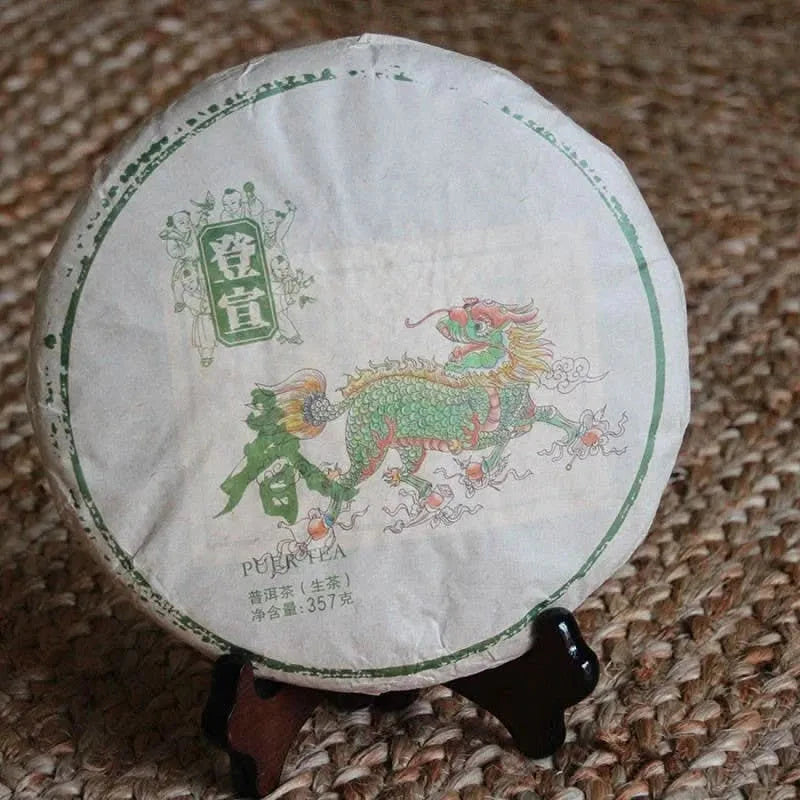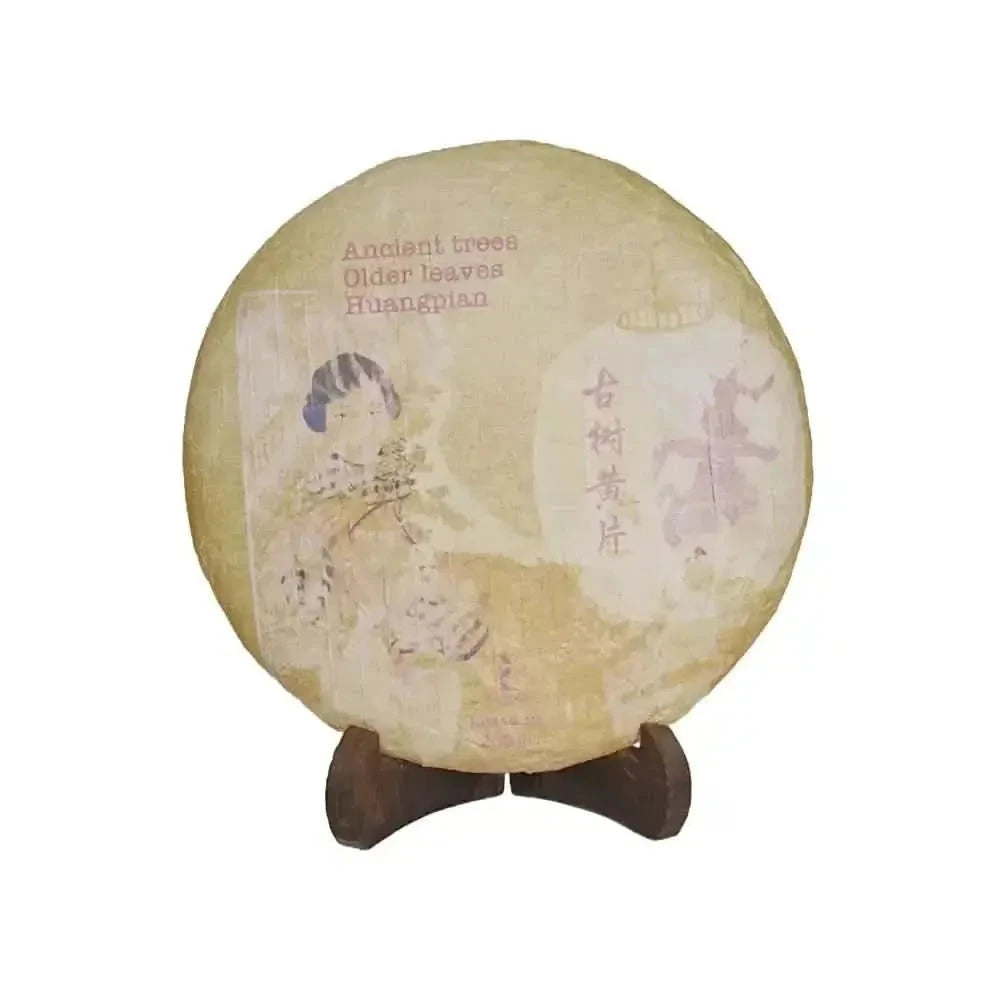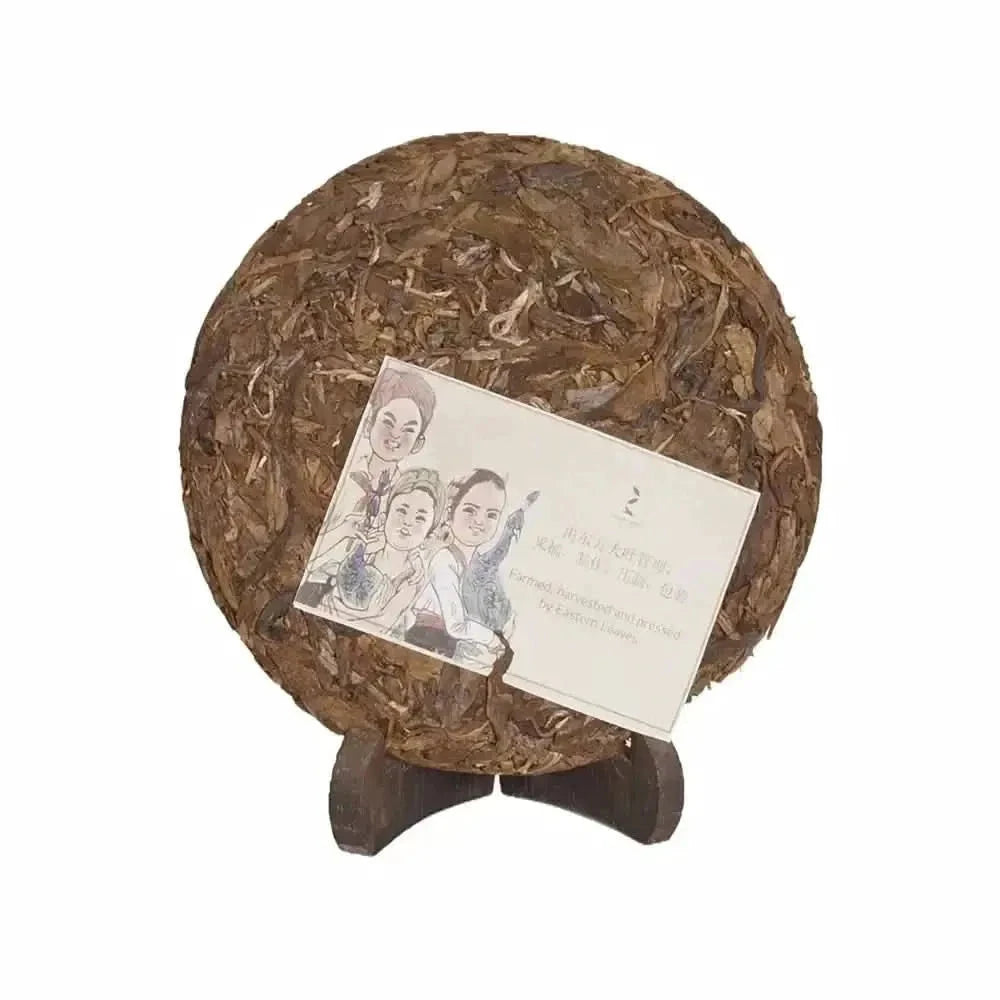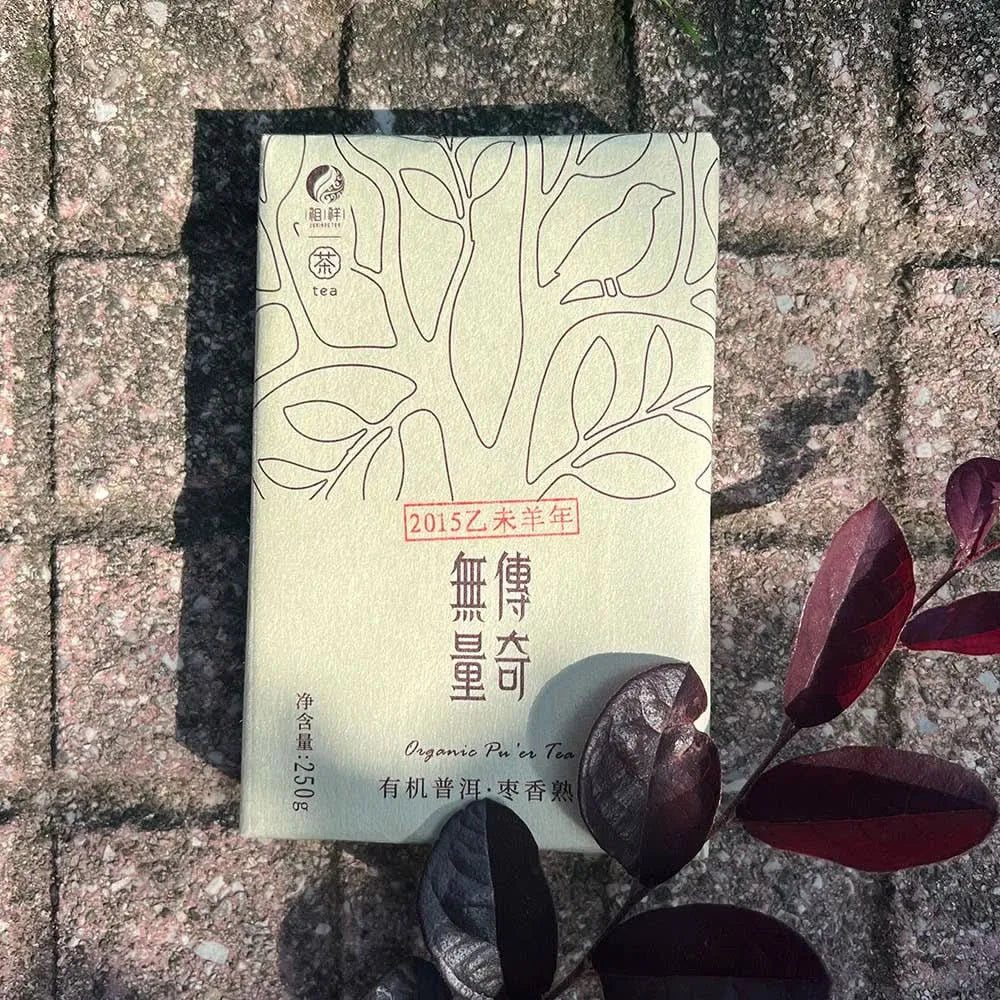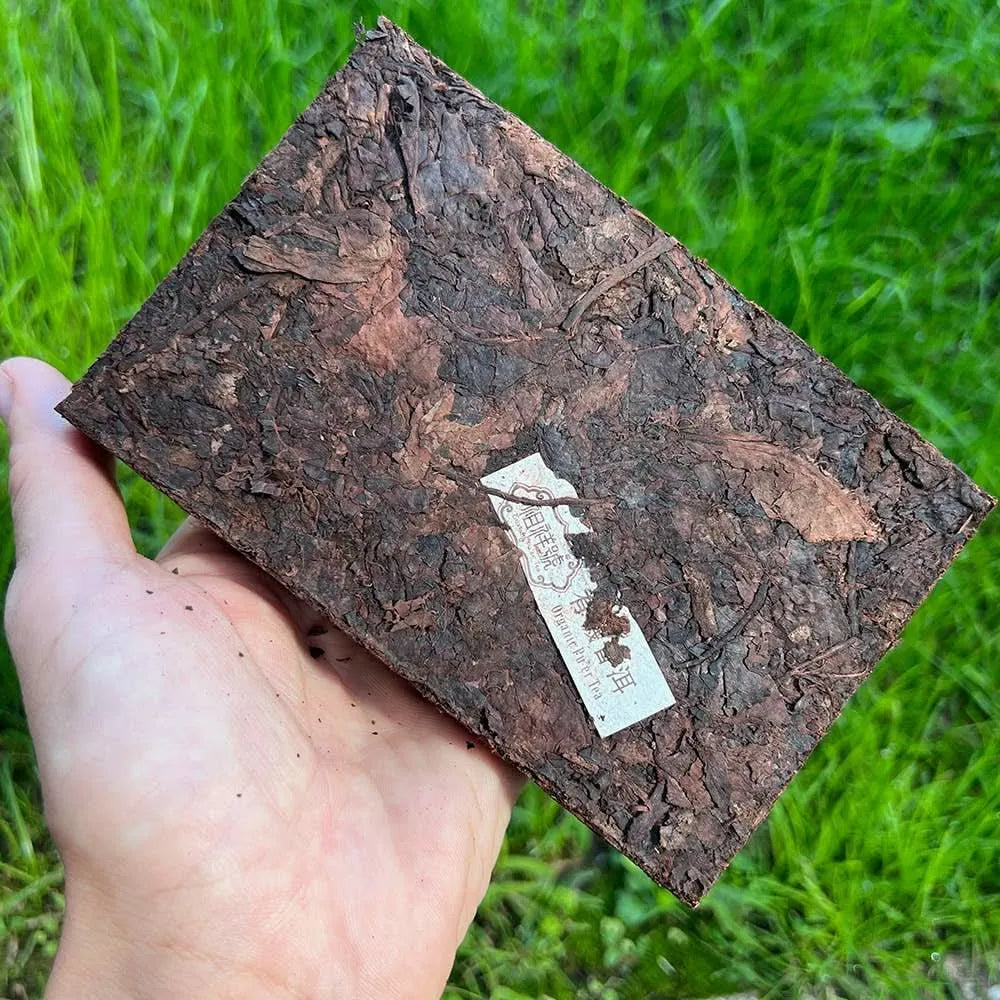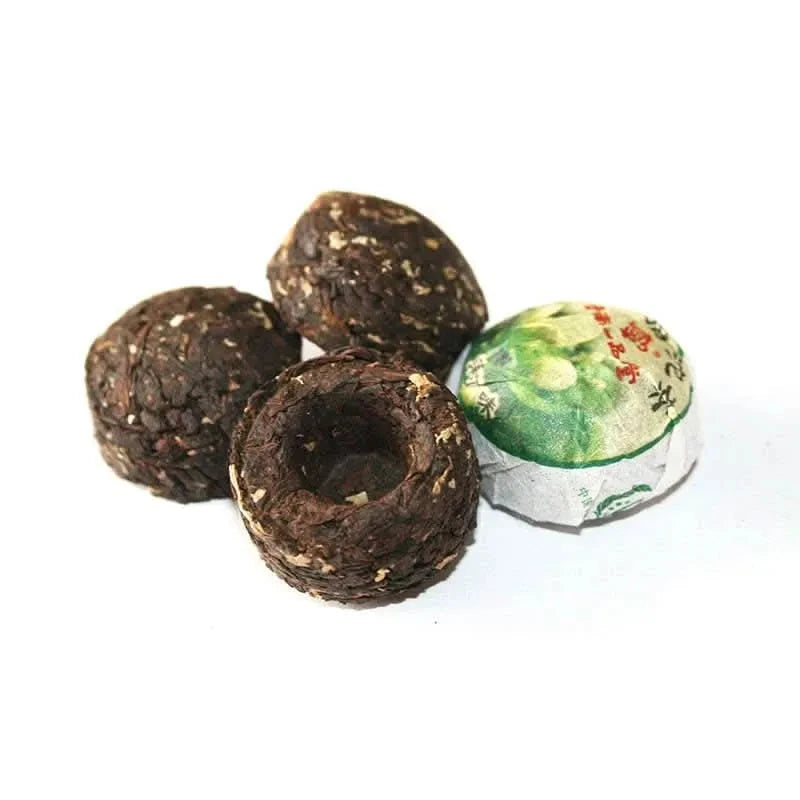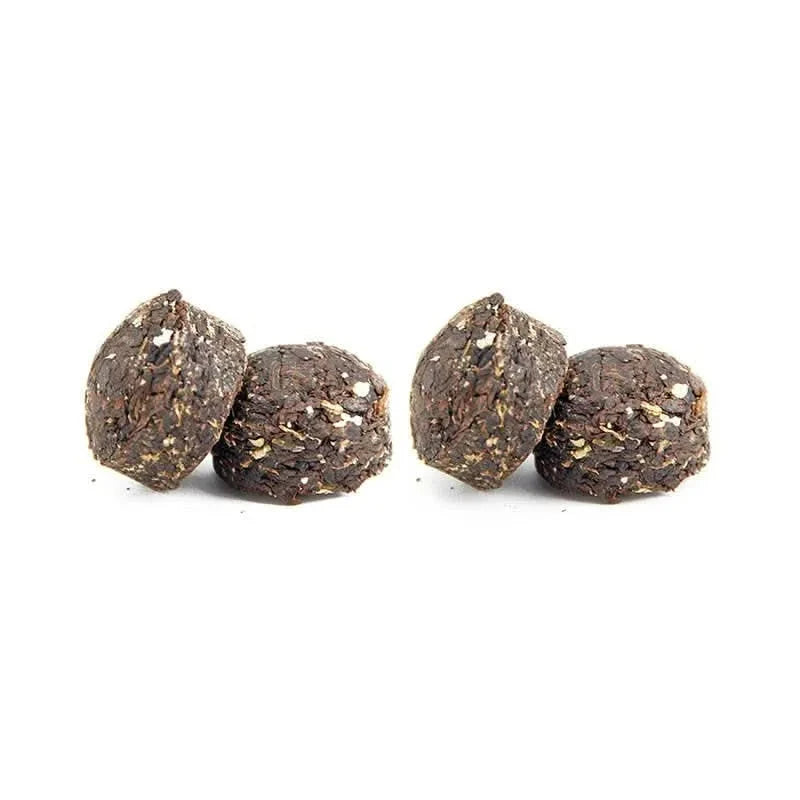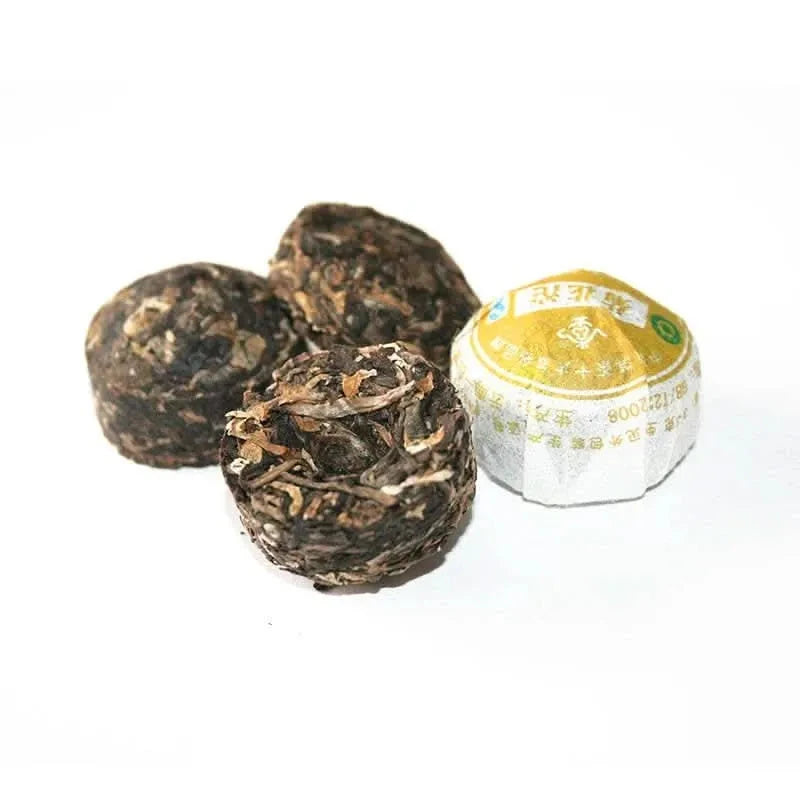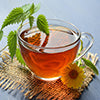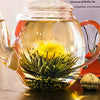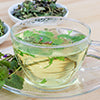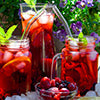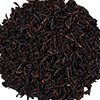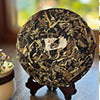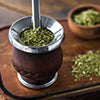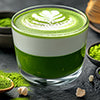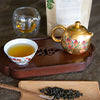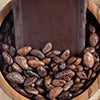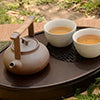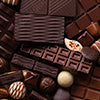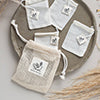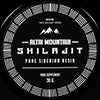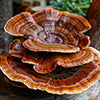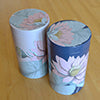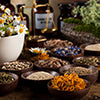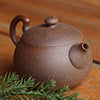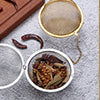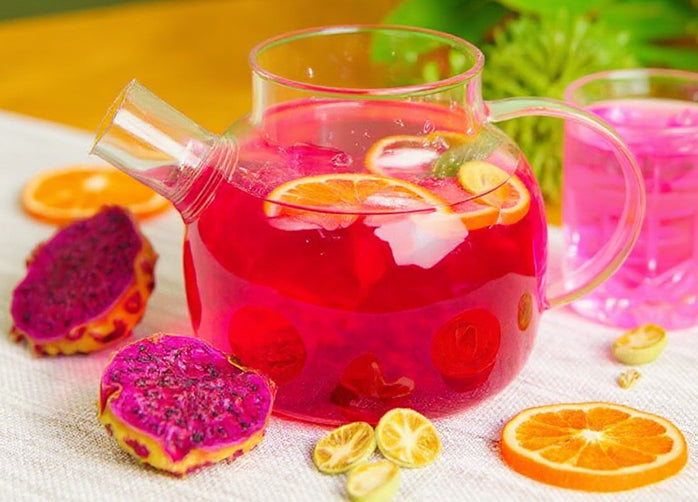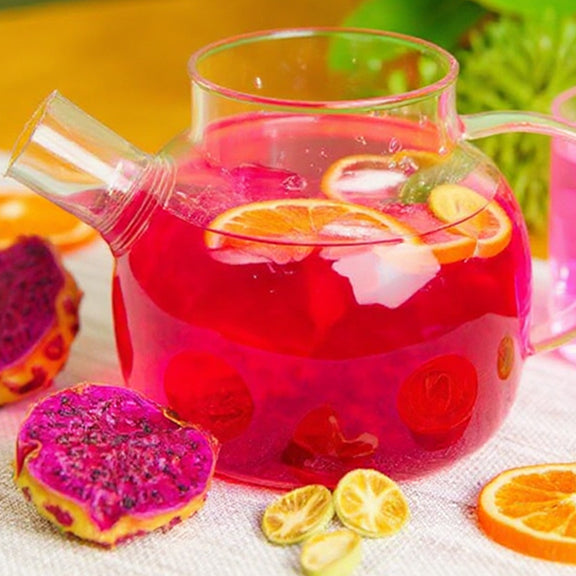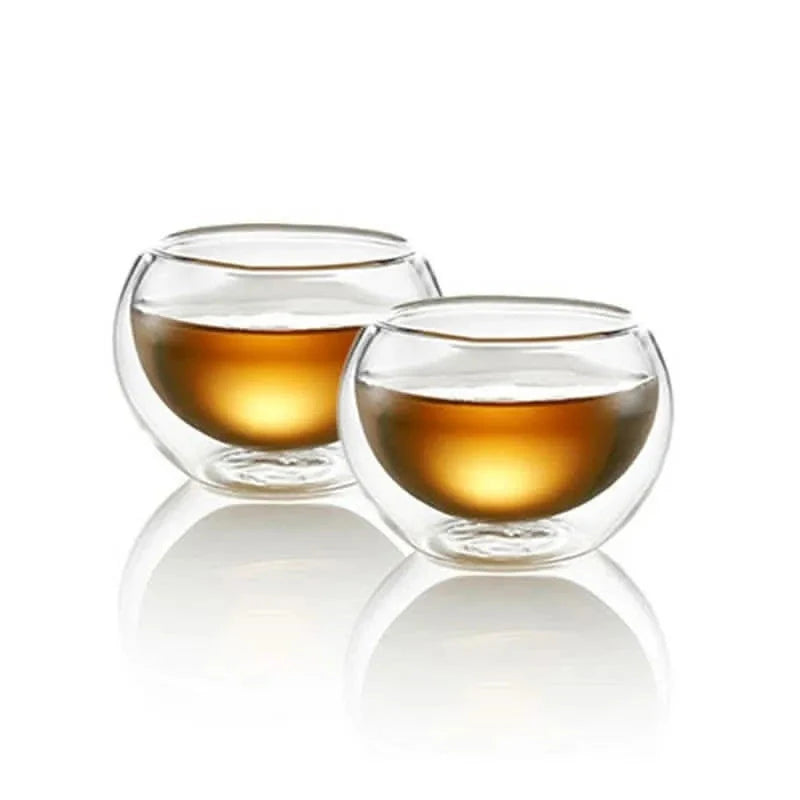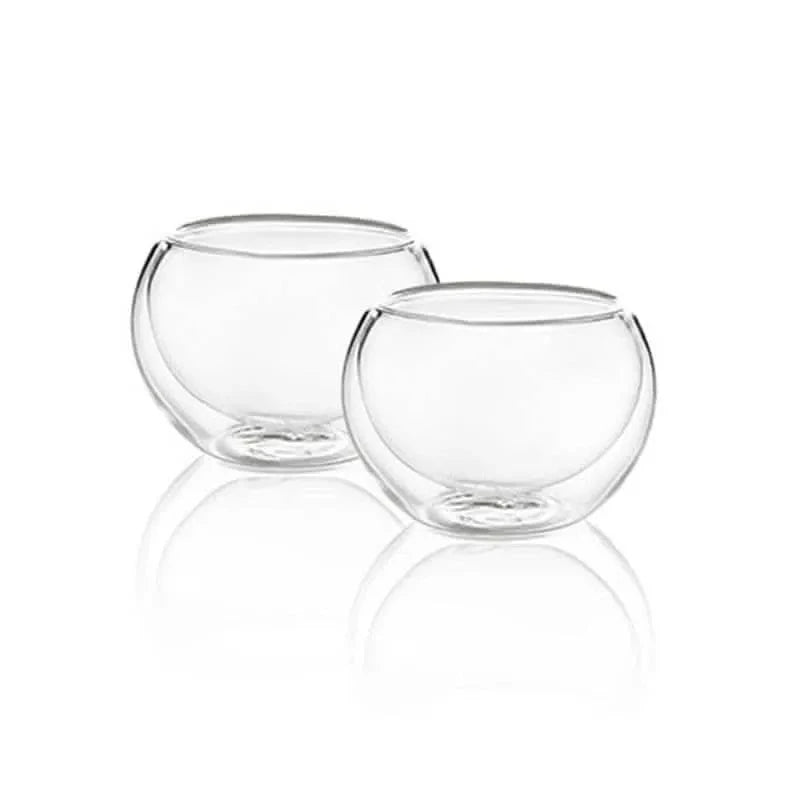Pu-erh Tea
Filter
Sort by:
Description
Pu-erh tea represents an exceptional category of post-fermented tea originating from Yunnan province in southwestern China. Harvested from broad-leaf tea varietal Camellia sinensis var. assamica, these leaves undergo a unique microbial fermentation process that fundamentally transforms their chemical composition and sensory properties. The distinctive earthy, woody profile develops through controlled aging, with properly stored specimens continuing to evolve beneficially for decades. Available in two primary classificationsraw (sheng) and ripe (shou)each offers distinct flavor profiles and aging potential. Raw pu-erh develops naturally over time, gradually transforming from initial astringency to complex sweetness, while ripe pu-erh undergoes accelerated fermentation that produces immediate smoothness with deep, earthy characteristics. Traditional compression methods create various forms including cakes, bricks, and nests (tuo cha) that facilitate optimal aging conditions. Quality indicators include leaf grade, compression density, storage conditions, and aging duration. Proper aging environments maintain stable humidity between 60-70% without temperature extremes. Renowned tea masters evaluate specimens based on liquor clarity, aroma complexity, mouthfeel, and finish length. Rich in beneficial compounds including unique theabrownins, statins, and GABA, pu-erh remains highly valued in traditional Chinese medicine for digestive and metabolic support. Commercial production scaled significantly during the Ming Dynasty, establishing formal trade routes that transformed this regional specialty into a global commodity.
Types
Comprehensive Guide to Distinct Pu-erh Tea Classifications
Pu-erh tea encompasses remarkable diversity through variations in processing methods, age, and regional characteristics. Each category delivers unique sensory experiences and collecting opportunities.
Raw Sheng Pu-erh: Natural Aging and Transformation
Raw (sheng) pu-erh represents the traditional form that undergoes natural fermentation over extended periods. Young sheng exhibits bright, vegetal characteristics with notable astringency and powerful energy effects. As these teas age, they gradually develop increased sweetness, diminished astringency, and complex dried fruit notes. Premium examples from established mountains like Bulang, Yiwu, and Lao Banzhang command particular attention from collectors. The microbial transformation process continues for decades, with well-aged specimens displaying amber liquor, medicinal herb notes, and distinctive "warehouse" aromas reflecting proper storage conditions.
Ripe Shou Pu-erh: Accelerated Fermentation Techniques
Ripe (shou) pu-erh undergoes accelerated fermentation through the wo dui ("wet pile") process, mimicking natural aging effects. This technique, developed in the 1970s, creates immediately approachable teas with minimal astringency, smooth mouthfeel, and pronounced earthy characteristics. Quality examples feature clean, sweet forest floor notes without mustiness or fermentation odors. While less prized for long-term aging than sheng varieties, well-produced shou teas continue developing subtle complexity over 10-15 years. Gong ting (imperial grade) versions utilize the finest leaf material for exceptional smoothness and sweetness.
Vintage and Aged Specimens: Collecting and Investment
Properly stored pu-erh from the 1980s-2000s represents a diminishing resource highly prized by collectors. These teas develop complex medicinal characteristics, pronounced hui gan (returning sweetness), and extraordinary aromatic depth. Verified examples from established factories like Menghai, Xiaguan, and CNNP command premium prices in specialized markets. Authentication involves evaluating compression methods, wrapper designs, and sensory characteristics against documented exemplars. Notable specimens include 1988 Red Label, 1950s Yellow Mark, and 7542 recipe cakes from various eras.
Regional Terroir Expressions: Mountain Characteristics
Specific mountains within Yunnan impart distinctive characteristics to pu-erh teas. Menghai region produces robust, bitter teas that age exceptionally well. Yiwu mountain teas feature floral qualities with honey-like sweetness. Bulang material delivers intense bitterness that transforms beautifully with age. Jingmai teas exhibit pronounced floral characteristics with exceptional aromatic complexity. Nannuo mountain produces gentle, accessible teas with characteristic "honey orchid" notes. These regional distinctions reflect microclimate, soil composition, indigenous tea tree genetics, and processing traditions maintained across generations.
Benefits
Comprehensive Health Benefits of Traditional Post-Fermented Tea
Pu-erh tea offers numerous evidence-backed wellness properties through its unique bioactive compounds and traditional applications in Chinese medicine.
Digestive System Support Through Microbial Action
The post-fermentation process creates beneficial microorganisms and enzymes that support optimal digestive function. These natural probiotics help regulate intestinal flora balance, potentially reducing bloating and improving nutrient absorption. Traditional Chinese medicine has utilized pu-erh for centuries as a digestive aid, particularly after consuming heavy or oily foods. The tea's natural cleansing properties help ease stomach discomfort while promoting regular elimination. Modern research suggests these effects stem from both microbial components and plant compounds that stimulate digestive enzyme production and support gut barrier function.
Lipid Metabolism and Cardiovascular Support
Research indicates pu-erh tea contains natural compounds that influence lipid metabolism. Regular consumption may help maintain healthy cholesterol levels by inhibiting lipid synthesis and enhancing fat oxidation. Studies have identified theabrownins and specialized catechins that support this effect. These compounds appear particularly effective at reducing triglyceride levels and low-density lipoprotein (LDL) while supporting healthy high-density lipoprotein (HDL) ratios. Laboratory investigations suggest pu-erh extract influences AMPK pathways involved in cellular energy regulation and fat utilization.
Antioxidant Protection and Cellular Defense
The fermentation process transforms tea polyphenols into unique compounds including theabrownins that provide potent antioxidant protection. These compounds help neutralize free radicals that contribute to cellular damage and premature aging. The tea's oxidative protection extends to specialized tissues including the liver, where it supports natural detoxification processes. Research indicates these antioxidant effects may help maintain DNA integrity while supporting cellular repair mechanisms. Aged specimens typically demonstrate increased antioxidant capacity compared to their unfermented counterparts.
Blood Sugar Regulation and Metabolic Balance
Studies suggest pu-erh tea may support healthy glucose metabolism through multiple mechanisms. Its compounds appear to enhance insulin sensitivity while moderating glucose absorption rates. Traditional Chinese medicine practitioners have long recommended the tea for maintaining energy balance and preventing fatigue. The polysaccharides and secondary metabolites in the tea support pancreatic function while helping maintain steady glucose levels. These effects make pu-erh particularly beneficial when consumed with carbohydrate-rich meals to moderate potential blood sugar fluctuations.
Instructions
Optimal Preparation Methods for Maximum Enjoyment
Traditional gongfu brewing techniques maximize pu-erh tea's complex flavor profile and therapeutic properties through precise preparation parameters.
Gongfu Ceremony Technique for Connoisseur Experience
The gongfu method utilizes a high leaf-to-water ratio (approximately 1g per 15ml) with multiple short infusions. Begin by breaking 5-8g from a compressed cake using a specialized pu-erh pick, maintaining intact leaf structure when possible. Rinse leaves twice with 95°C (203°F) water for 5-10 seconds, discarding these initial infusions to remove dust and "awaken" the leaves. For initial steeps, infuse for 10-15 seconds, gradually increasing subsequent steeping times by 5-10 seconds as flavors diminish. Quality specimens yield 10-20 infusions, revealing evolving aroma compounds and flavor notes throughout the session. Yixing clay teapots or gaiwan vessels maximize heat retention while complementing earthy notes.
Western-Style Brewing for Daily Consumption
For convenient daily drinking, use approximately 3-4g of leaf per 240ml of water at 95°C (203°F). After a brief rinse, steep for 3-4 minutes for ripe pu-erh or 2-3 minutes for raw varieties. This method produces a full-bodied cup that captures the tea's essential characteristics in a single infusion. While offering less complexity than gongfu preparation, this approach suits office environments or situations requiring simplicity. Quality specimens remain smooth without excessive astringency even with extended steeping times. Glass or ceramic vessels provide neutral brewing environments suitable for this method.
Cold Extraction for Refreshing Summer Option
Cold brewing offers a refreshing alternative that highlights pu-erh's smooth characteristics while minimizing any potential astringency. Place 5g of leaf in 750ml of filtered water and refrigerate for 12-24 hours. Ripe pu-erh produces rich, sweet liquor with chocolate and earthy notes, while aged raw pu-erh develops fruit-forward characteristics with remarkable sweetness. This method extracts fewer caffeine compounds while maximizing theanine content, creating a relaxing yet refreshing beverage. Extended extraction times up to 36 hours continue developing complexity without bitterness or undesirable compounds.
Proper Storage Techniques for Aging Potential
Maintain optimal aging conditions by storing pu-erh cakes in breathable containers that permit air circulation without direct exposure to strong odors. Ideal environments maintain 60-70% relative humidity and stable temperatures between 18-24°C (65-75°F). Traditional Yunnan storage utilizes unglazed clay vessels or breathable paper within wooden cabinets. For long-term aging, avoid plastic containers that trap moisture and prevent gas exchange necessary for proper microbial activity. Monitor cakes periodically, ensuring they remain free from mold while developing desired aging characteristics.
FAQs
